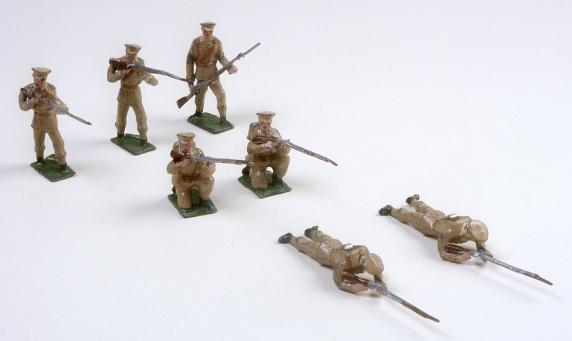




Advanced Search
| Online Collection |
|
|||||||||||||||
|
Toy soldiers have been collected for centuries. First made from wood, stone, clay and metal for the rich and royal, it wasn't until the end of the 18th century that they were first mass-produced. By the turn of the 20th century, several companies in Europe were producing inexpensive lead toy soldiers, which began to catch on with children and adults alike. American makers began producing toy army figures around World War I (WWI). Several makers molded their figures in cast iron or used a sawdust and glue mixture called "composition." After WWII, amid concerns about lead poisoning, some manufacturers looked to plastic as a cheaper and more child-friendly medium. These toy soldiers, wearing olive drab and made of composition, are stamped Lineol, which is a German toy company. They were owned by the Harold and Effie Ames family of Northampton, Massachusetts. Their four sons, Frederick, William, Richard and Roger, born between 1927 and 1933, played with them in the 1930s.
|
Group of Toy Soldiers
|
| |
Home | Online Collection | Things
To Do | Turns
Exhibit | Classroom | Chronologies | My
Collection
About This Site | Site Index | Site Search | Feedback


